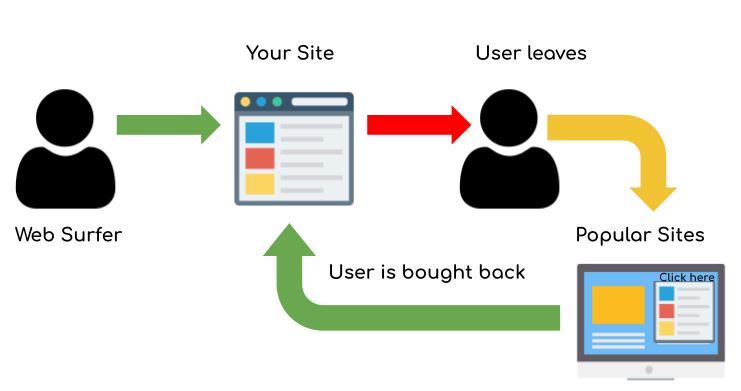
Introduction
In today's digitally interconnected world, consumers engage with brands through various channels, from social media platforms to email newsletters and websites. To capture their attention effectively, advertisers need to reach their audiences across these channels with a cohesive and integrated approach. Enter cross-channel advertising—a strategy that allows brands to deliver consistent messages and experiences across multiple platforms. In this blog post, we will explore the concept of cross-channel advertising, its benefits, and how it can help businesses connect with their audience in a seamless and impactful way.
Understanding Cross-Channel Advertising
Cross-channel advertising is an advertising strategy that involves delivering coordinated messages and experiences to a target audience across different marketing channels. These channels can include social media, email, search engines, display ads, mobile apps, and more. The goal is to create a unified brand experience that follows users as they move from one platform to another, reinforcing the brand's message and value proposition.

The Power of Consistency
Consistency is a crucial aspect of cross-channel advertising. By presenting a unified message and brand identity across various platforms, brands can strengthen their presence in the minds of consumers. Consistency builds trust and familiarity, ultimately leading to higher engagement and increased conversions.
Understanding Your Audience
To implement an effective cross-channel advertising strategy, businesses must thoroughly understand their target audience. This includes their preferences, behavior, and preferred platforms. By gaining insights into their audience's preferences, brands can tailor their messages to resonate with specific segments and maximize the impact of their cross-channel campaigns.
Seamless Customer Journey
Cross-channel advertising aims to create a seamless customer journey, where users can effortlessly transition between channels without losing the thread of the brand's narrative. For example, a user who discovers a product through a social media ad should be able to find the same product on the brand's website easily. This seamless transition helps eliminate friction in the buying process and enhances the overall user experience.
Leveraging Data and Attribution
Data plays a vital role in cross-channel advertising. By analyzing data from various channels, advertisers can gain valuable insights into user behavior and preferences. Additionally, attribution models help businesses understand the impact of each channel on the customer journey, enabling them to optimize their ad spend and allocate resources more effectively.
Challenges and Best Practices
While cross-channel advertising offers numerous benefits, it also comes with challenges. Managing multiple channels, maintaining consistent messaging, and analyzing data from various sources can be complex. However, by following best practices, such as using marketing automation tools, creating detailed customer personas, and measuring key performance indicators (KPIs), businesses can overcome these challenges and drive successful cross-channel campaigns.
Harnessing the Power of Cross-Channel Advertising for Business Growth
In a hyper-connected world where consumers constantly switch between devices and platforms, advertisers need to meet their audience wherever they are. This is where cross-channel advertising comes into play, offering businesses an opportunity to expand their reach and engage customers on multiple fronts. In this blog post, we will delve deeper into cross-channel advertising, exploring the strategies businesses can use to harness its power and drive significant business growth.
Building a Holistic Strategy
A successful cross-channel advertising strategy begins with a holistic approach. Rather than treating each channel in isolation, businesses must integrate their efforts across platforms. This means creating a unified brand identity, consistent messaging, and a seamless user experience that resonates across every channel.
Understanding Channel-Specific Behavior
While consistency is crucial, businesses must also recognize that each channel has its unique characteristics and user behavior. For instance, users may engage differently on social media compared to email or search engines. Understanding these differences helps tailor content and ads to fit the preferences of users on each platform, maximizing the impact of the campaign.
Utilizing First-Party Data
First-party data is a valuable asset in cross-channel advertising. By collecting and analyzing data directly from their audience, businesses can gain deeper insights into customer preferences, interests, and behavior. This data can then be used to create personalized and relevant campaigns across various channels, driving higher engagement and conversions.
Leveraging Automation and Personalization
With the abundance of data available, automation and personalization are essential components of cross-channel advertising. Automation tools can streamline the process of managing multiple channels, allowing businesses to deliver timely and relevant messages without manual intervention. Personalization, on the other hand, enables brands to connect with users on a one-to-one level, making customers feel valued and understood.
Tracking and Measuring Success
As with any marketing strategy, tracking and measuring the success of cross-channel advertising campaigns are crucial. Businesses should define key performance indicators (KPIs) and use attribution models to understand the contribution of each channel to the overall customer journey. This data-driven approach helps optimize campaigns and allocate resources where they deliver the most significant impact.
Iterative Optimization
Cross-channel advertising is not a one-time effort but an ongoing process of refinement and optimization. By continuously analyzing data, gathering feedback, and adapting strategies, businesses can stay agile and make informed decisions to enhance the effectiveness of their campaigns.
Conclusion
Cross-channel advertising is the future of digital marketing, empowering businesses to connect with their audience in a seamless and impactful way. By delivering consistent messages across various platforms, brands can build trust, engage their audience, and drive conversions. As technology continues to evolve, cross-channel advertising will remain a key strategy for businesses seeking to stay relevant and competitive.
Cross-channel advertising presents businesses with a powerful way to connect with their audience, drive engagement, and achieve business growth. By adopting a holistic approach, leveraging data, personalizing experiences, and optimizing campaigns iteratively, brands can unlock the full potential of cross-channel advertising. As technology continues to evolve, businesses that embrace this strategy will stay ahead in the dynamic and competitive digital landscape.
